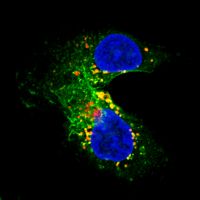|
This may just be the start of it, as “Functional Glycomics” is an emerging field that attracts more and more attentions given the fact that what goes on during the glycosylation stage within a cell may very well be the key factors of many diseases.
In the April Edition of "Nature Functional Glycomics Gateway”, the editor has chosen to give a review of their work in “the Research Highlight” and pinpointed that their method “adds a powerful technique to the glycosylation and glycoprotein analysis repertoire.”
The “Functional Glycomics Gateway” is a collaborated web-based online resource supported by the Consortium for Functional Glycomics (CFG) and Nature Publishing Group. It is designed to highlight new and important contributions to the field. Two featured articles a month on the most relevant advances in the field published in NPG and other top journals are selected.
View this research high light on Functional Glycomics Gateway




